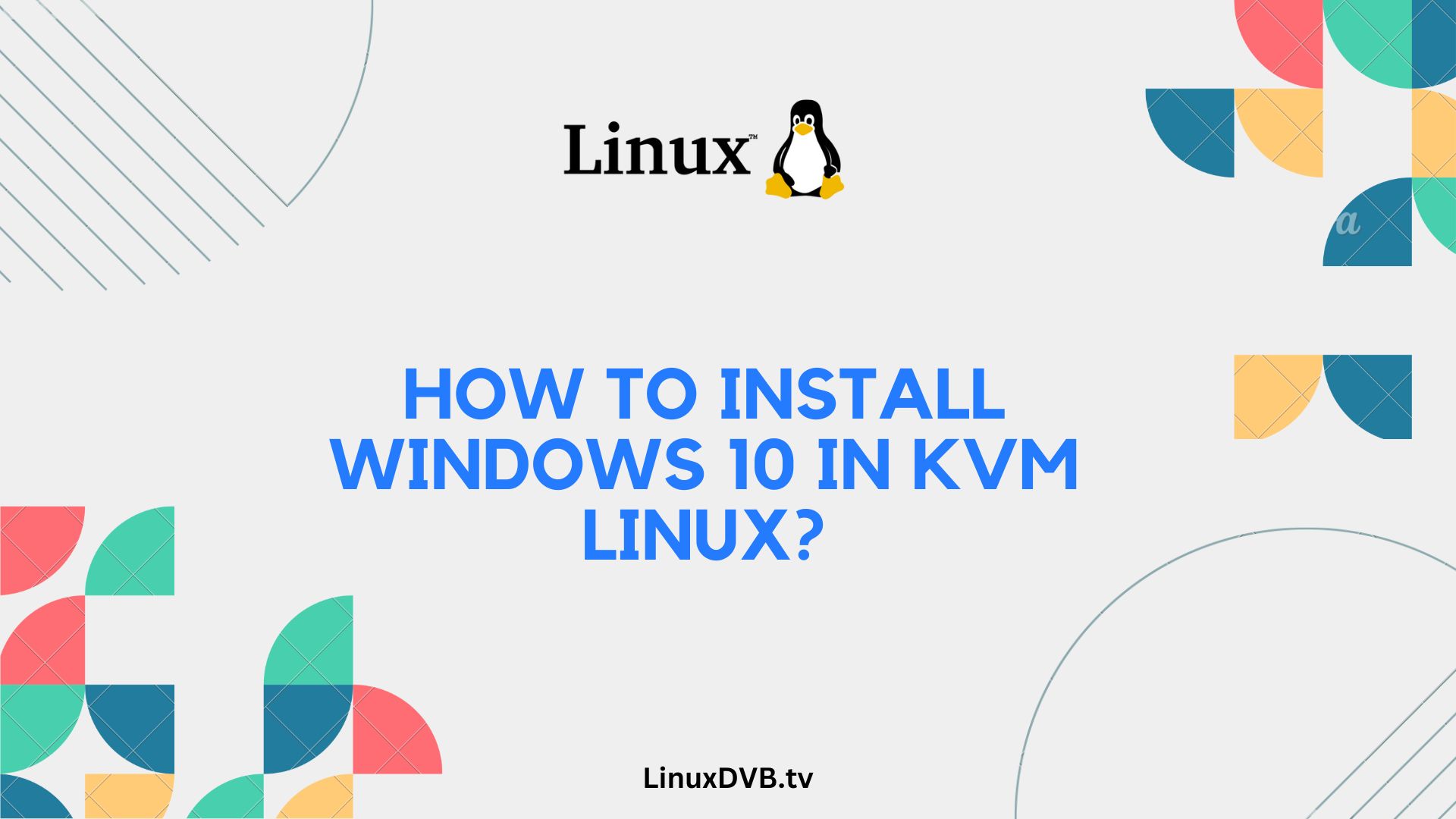In today’s tech-savvy world, having the flexibility to run multiple operating systems on a single machine can be a game-changer. If you’re a Linux enthusiast who wants to explore Windows 10 without switching devices, you’re in the right place. In this comprehensive guide, we’ll walk you through the steps to install Windows 10 in KVM Linux, a virtualization solution that allows you to run Windows seamlessly alongside your favorite Linux distribution.
Table of Contents
Preparing Your System
What is KVM Linux?
Before we dive into the installation process, let’s briefly explain what KVM Linux is. KVM, or Kernel-based Virtual Machine, is an open-source virtualization technology that’s built right into the Linux kernel. It provides the tools and infrastructure needed to run virtual machines (VMs) on a Linux host.
Why install Windows 10 in KVM Linux?
You might wonder why you’d want to install Windows 10 within a Linux environment. There are several compelling reasons. Maybe you need to test software on Windows, play Windows-exclusive games, or simply prefer Linux for your daily tasks. Regardless of your motivation, KVM Linux offers a powerful solution for seamless Windows integration.
Getting Windows 10 ISO
To get started, you’ll need a Windows 10 ISO file.
Downloading the Windows 10 ISO
Visit the official Microsoft website or a trusted source to download the Windows 10 ISO. Make sure you select the version that suits your needs (e.g., Home, Pro, or Education).
Verifying the ISO file
After downloading, it’s crucial to verify the integrity of the ISO file to ensure it hasn’t been tampered with. This step ensures you’re working with a genuine Windows 10 installation image.
Creating a Virtual Machine
Now, let’s set up the virtual machine that will run Windows 10.
Configuring CPU and RAM settings
Allocate an appropriate amount of CPU cores and RAM to your virtual machine based on your system’s capabilities. Be mindful not to overcommit resources, as this can lead to performance issues.
Allocating disk space
Create a virtual hard disk with sufficient space to install Windows 10 and any applications you plan to use. Dynamic disk allocation is a space-saving option, as it only uses storage as needed.
Installing Windows 10
With your virtual machine configured, it’s time to install Windows 10.
Initiating the virtual machine
Start the virtual machine and select the Windows 10 ISO as the bootable media. This will initiate the installation process.
Installing Windows 10
Follow the on-screen instructions to install Windows 10. You’ll need to provide a product key if required. Make sure to choose the appropriate disk partition for the installation.
Post-Installation Setup
After Windows 10 is installed, there are some important post-installation steps.
Installing Virtio drivers
To enhance performance, install Virtio drivers, which are optimized for virtual environments. These drivers improve disk and network performance within the VM.
Configuring network settings
Ensure that your virtual machine has internet access by configuring the network settings properly. You can choose between NAT, bridged, or other network modes based on your needs.
Optimizing Performance
For a smooth experience, consider these performance optimizations.
Enabling hardware acceleration
Enable hardware acceleration features like KVM’s Virtio to boost graphics and overall performance within the virtual machine.
Installing additional software
Install essential software within your Windows 10 VM, such as web browsers, productivity tools, or development environments, to tailor it to your needs.
Troubleshooting
While the installation process is typically straightforward, issues can arise.
Common issues and solutions include:
- Low Disk Space: Allocate more space to your virtual hard disk.
- Driver Problems: Ensure Virtio drivers are correctly installed.
- Network Connectivity: Double-check network configurations.
- Running Windows 11: Consider hardware compatibility.
Backup and Snapshot
Don’t forget to create backups and snapshots of your Windows 10 VM.
This can be a lifesaver if you encounter issues or need to experiment with different configurations.
Security Considerations
Keep your virtual environment secure.
Ensure your Windows 10 installation is regularly updated with security patches, and consider firewall and antivirus solutions.
Data Transfer
Transferring files between the Linux host and Windows VM is essential.
Explore methods like shared folders, FTP, or cloud storage for seamless data transfer.
FAQs
How much disk space is recommended?
We recommend allocating at least 30-40 GB of disk space for a standard Windows 10 installation.
Can I run other OSs alongside Windows?
Yes, KVM Linux allows you to run multiple VMs with different operating systems on your Linux host.
What if I encounter driver issues?
Ensure Virtio drivers are correctly installed, and consider updating your KVM and Linux kernel.
Is it possible to run Windows 11?
While Windows 11 has specific hardware requirements, it can be run in KVM Linux with compatible hardware.
How do I remove Windows 10 later?
You can remove Windows 10 by deleting the VM and associated files. Be sure to back up any important data first.
Can I use Windows apps on KVM Linux?
Yes, you can use Windows apps within your Windows 10 VM while running KVM Linux.
How to install Windows 10 in KVM Linux?
You can install Windows 10 in KVM on Linux by creating a virtual machine, allocating resources, and using an ISO image of Windows 10 for installation.
Can I run Windows on KVM?
Yes, you can run Windows on KVM (Kernel-based Virtual Machine) on a Linux host using virtualization technology.
Conclusion
In conclusion, installing Windows 10 in KVM Linux opens up a world of possibilities. You can enjoy the best of both worlds, seamlessly switching between Linux and Windows as needed. By following this guide, you’ll have the expertise to set up your own virtualized Windows environment. Explore, experiment, and make the most of your versatile Linux system.

